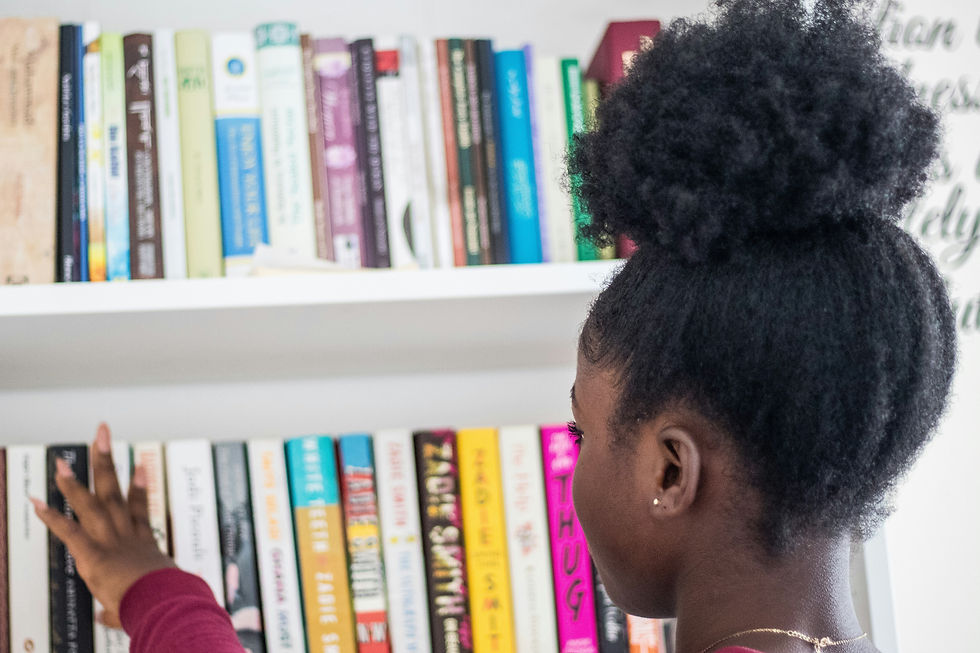Losing Our Libraries in Secondary School
- kateguthrie3
- Sep 20, 2024
- 4 min read
With every council suffering a staffing shortage due to budget cuts, schools are losing their librarians at an alarming rate. Not having access to this vital hub in school impacts everyone: the teachers, who can no longer use the space unless they sacrifice their non-contact time; the learners, who make extensive use of the facility and the non-teaching staff, whose contracts are pinched to breaking point as roles become part-time and/or term time only - or are mothballed entirely.
This is not good. This will have a detrimental impact on everyone.

Reading is fundamental. Beyond the crucial need to be literate, reading inspires by improving communication skills (through empathising with a person’s situation and experiences); educates you; makes you a better and more creative writer and helps to reduce stress and anxiety. As an English teacher, I have found that learners who read more have better vocabulary, they cite favourite characters and their reactions to stressful situations as a guide to navigating their own and can make critical decisions with this in mind. So how can we, apart from through continued pressure on our government, get learners reading?
If You Still Have Access to a Librarian
Apart from cherishing them, work with your librarian to find ways to encourage learners into the library and the loaning of books. Discuss with them ways to promote reading – could there be a school-wide competition, for example? Opportunities such as a “Date with a Book”, where books are wrapped in blank packaging with a short description, encourage people to not judge a book by its cover. Could they have a platform where they can introduce new texts - or recap classics - in line with school and national events. Could you begin making your school an accredited Reading School? Could they work with S6 or younger learners as ‘Literacy Ambassadors’ and promote the library and all its text choices to encourage footfall? Asking them is the first step.
If You Still Have a Library Space
Some schools have trialled the use of Senior Level learners running the library in their study periods. This has, of course, been met with controversy and is certainly not ideal. However, if there is no one present in the space, it will leave the area prone to being plundered for its books or, even worse, vandalised. Many of these spaces contain ICT features and therefore this double use could encourage all teachers to utilise the space and work to maintain the area. If you can still use the space in the library, we have a range of growing resources for S1 library activities:
Our S1 Library Activities 1: Our Secondary School Library introduces this setting and research skills. S1 Library Activities 2: The Dewey Decimal System explores the Dewey Decimal System and how the codes are used to organise the library area. It is brilliant for looking at the myriad of text choices for learners to loan out and read and displaying Reading Strategies or Teacher's Favourite Book Poster will be an eye catching lure for the space.

No Library? Consider a Class Library.
Many schools have mini-libraries in their English classrooms (and some still have the library that they can borrow from). Approaching parent councils and/or local charities can be a great way to obtain new(er) books and enrich the current stock on offer.
One school I spoke to noted that “prefects were trained as class librarians; they run this during their free periods or lunchtime on a rota. Kids bring books from home too so they can sit in the classroom and read during lunchtime.” Again, controversy aside, this can be a way to get people reading and take the pressure off teachers to organise everything.
When exploring this issue on social media, one comment was “We have a reading club. After reading their book, students choose a task from the After Reading Activity Series Resource Pack and they have a reading log that they fill in. They read for 10 minutes at the start of every period. It’s a school rule that you must always carry a personal reading book."
You could use our S1 Building A Reading Culture: Reading for Pleasure to strengthen skimming and scanning skills as well as prediction when reading. For group work, brilliant for mixed ability classes, our BGE Reading: Literature Circles promote discussion and consolidate understanding of a text.
As learners read, track their progress using our BGE Reading: Achievement Chart and celebrate success with our BGE Reading: Award Certificates and share learner work such as our Reading: Pizza Poster Book Review on the school's social media to encourage others.
We have been working hard on Building A Reading Culture and have a series of resources and posters for you to use in your lessons.
Reading is not just books. Many find that learners who like books will read, but there will be some in your class who won’t read regardless of having books in a library or classroom. Our blog How To Not Hate Reading explores ways educators can revitalise their approach to reading. Expanding the idea of reading for your learners to make it applicable to them may result in learners trying something they never have before. Above all, exposure to books and encouragement to participate will hopefully keep this vital place alive.

The Conduit team is passionate about what we do. We want to support our colleagues, providing resources that are relevant and indispensable to you. However, we do need to know how best to deliver that for you. You can do that by sending User Requests to us so that we know what kind of resources you need or are missing from your collection. You can interact with us on our Social Media channels:
Instagram: Conduit_Connecting_Knowledge
Twitter: @ConduitScotEdu
Comments